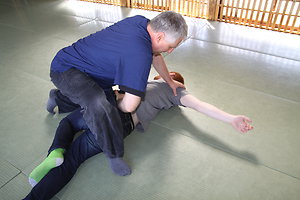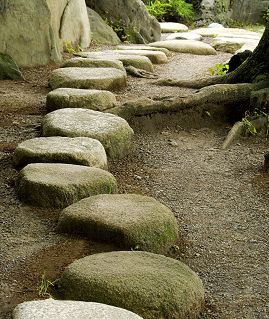Hichibuku Goshin-jutsu (秘致武九護身術) Levels 2
Contraindications to Chōsei-hō (調整法) techniques
Jūnan taisō (柔軟 体操)
Traditional Japanese stretching exercises to encourage a supple and healthy body
Kokyū-hō (呼吸法)
Specific Japanese breathing methods for health and relaxation
Bujin-shoku (武人 食)
Japanese nutrition. The principle is ‘you are what you eat’. Food can be a very powerful medicine and is about more than just having sufficient nutrients, vitamins and minerals. By choosing the correct foods you can counteract stress, disease and general body weaknesses.
Chōsei-hō (調整法)
Japanese skeletal manipulation method to balance the body by correcting restrictions and misalignments to the skeletal joints. Dr Hatsumi states that "All illnesses have something to do with the abnormality of the spine". In addition such restrictions in the joints create stagnation which inhibits the free flow of 'Ki' (vital energy)
Treatment advice and contraindications to Chōsei (調整)
Face (顔 Kao) and spinal (背骨 Sebone) diagnosis (診断 Shindan)
Treatment methods for:-
- Regulation of the Spine (背骨 Sebone)
- Stomach (腹 Hara)
- Neck (Cervical spine) (頸椎 Keitsui)
- Back (Thoracic spine) (胸椎 Kyōtsui)
- The legs, & feet (脚 Ashi)
Treatment methods for regulation of the :- - Waist (lumbar spine / pelvis ) (腰椎 Yōtsui / 骨盤 Kotsuban)
- Abdomen (Anpuku-hō (按腹法) / visceral)
- Nervous system (神経系 Shinkei-kei)
- Circulatory system (血液循環系 Ketsueki junkan-kei)
Chūkyū-waza (中級技) 1, 2 & 3
Level 2 general treatment routines (kata 型) to correct and maintain the patient's bodyTheory
Anatomy & Physiology - Autonomic nervous system
- Circulatory system (incl. vasomotor nerves)
- Lymphatic system.
Principals of pathology
Patient / client Assessment
Orthopaedic testing for the: - Spine,
- Lower extremity
- Upper extremity
incl.: - Passive movements
- Active resisted movements
(Please note that course contents may be subject to minor variations)

